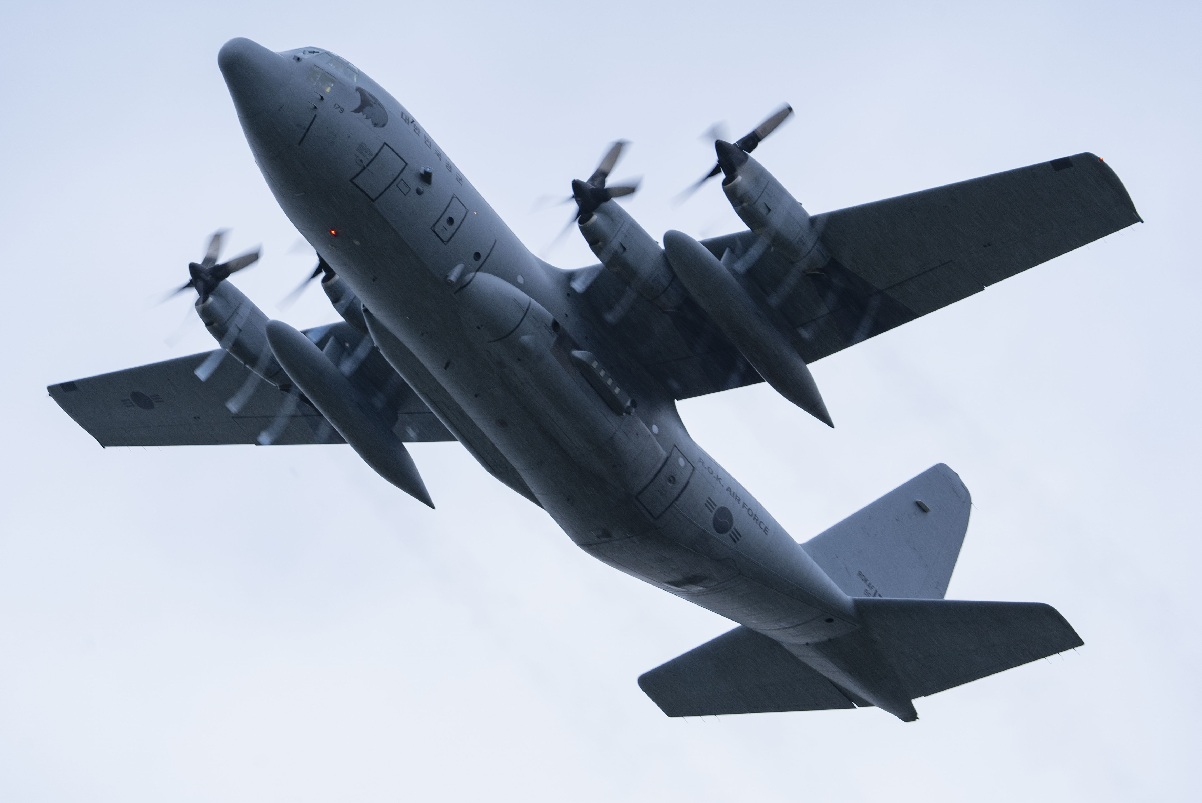
South Korea’s military has launched an investigation after one of its transport planes entered Japan’s air defense identification zone (ADIZ) without prior notice, leading Japan to scramble fighters to carry out an interception.
Newsweek has reached out to South Korea’s defense ministry by email with a request for comment.
Why It Matters
An ADIZ is a designated area of airspace where foreign aircraft are required to identify themselves. Failure to do so typically prompts the claimant nation to dispatch military aircraft.
Japan and South Korea—both key U.S. security partners in the Asia-Pacific—have a history of uneasy relations, shaped by Japan’s colonial rule over the Korean Peninsula and a territorial dispute over a group of islets. Still, recent years have seen increased security cooperation between the uneasy partners in response to perceived threats posed by North Korea and China.
Airman 1st Class Julia Lebens/U.S. Air Force
What To Know
On July 13, a South Korean Lockheed C-130 Hercules, en route to a large-scale U.S.-led military exercise in Guam, was forced to reroute to Kadena Air Base in Japan’s Okinawa Prefecture to refuel.
While officials did not name the exercise, it was likely the ongoing Resolute Force Pacific, billed as the largest combat exercise ever held in the Pacific.
The diversion occurred after the plane burned through more fuel than expected while navigating bad weather, a South Korean military spokesperson told the media Thursday.
The plane entered Japan’s ADIZ without first obtaining clearance, prompting Japan to dispatch fighter jets to intercept the aircraft, the country’s Joint Staff told outlet Stars and Stripes.
The C-130’s pilot then explained the situation to U.S. and Japanese forces via radio before making an emergency landing, Seoul said.
After refueling, the aircraft was cleared to continue on to Guam, a U.S. territory.
“We conveyed to South Korea that this scramble was regrettable and requested measures to prevent further incidents,” a Japanese official said. “But as they are our important partner, we will continue to work closely together to address the issue.”
The incident came just two days after a joint drill in South Korea involving U.S. and South Korean fighter jets and a U.S. B-52 Stratofortress.
It marked the first deployment this year of the nuclear-capable bomber to the Korean Peninsula.
What’s Next
It’s unclear whether South Korea’s military will take disciplinary measures against the C-130 pilot.
Japan is expected to continue to respond to anomalous activity within its EEZ, particularly in light of repeated encroachments by Chinese drones.
